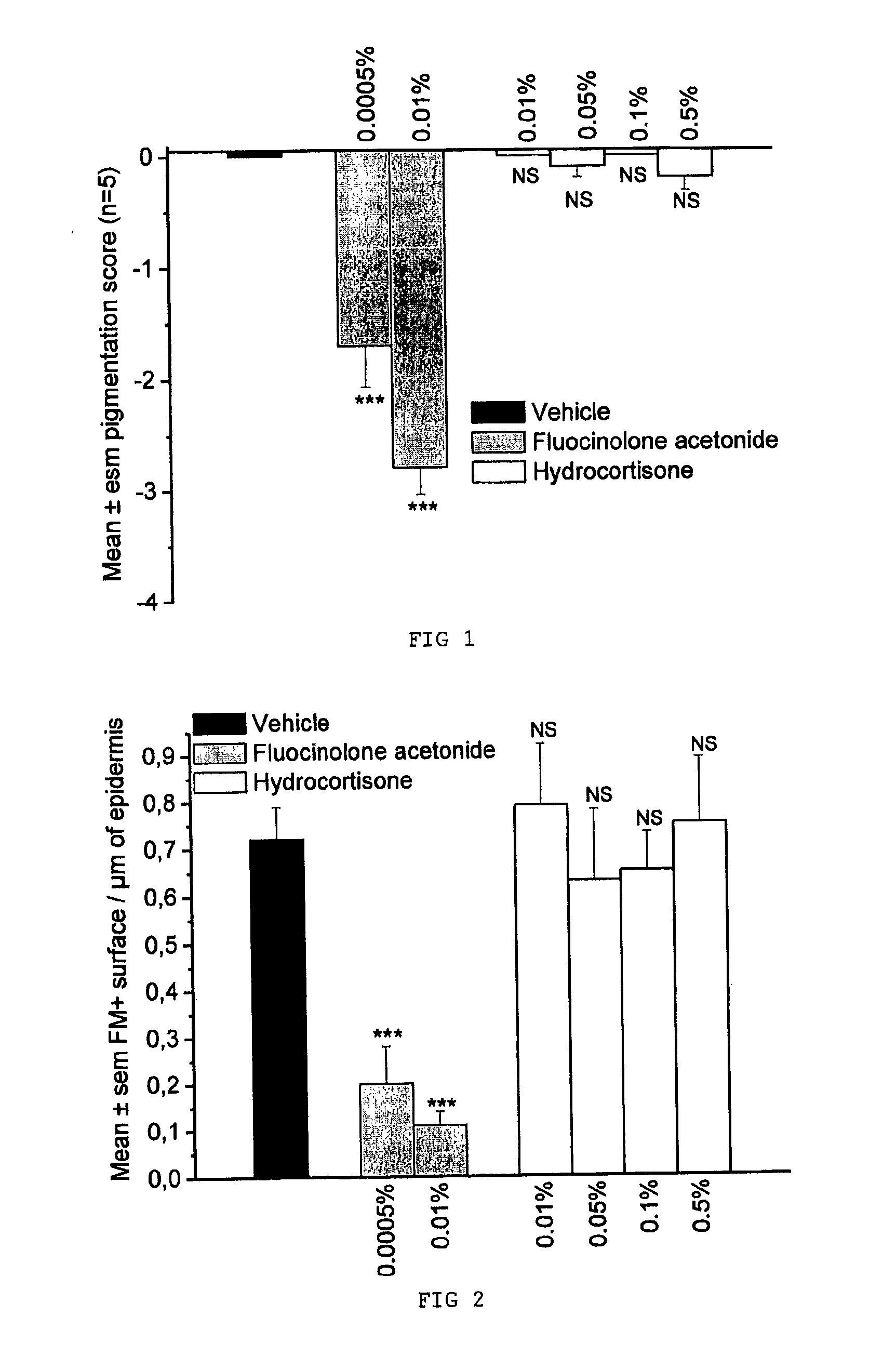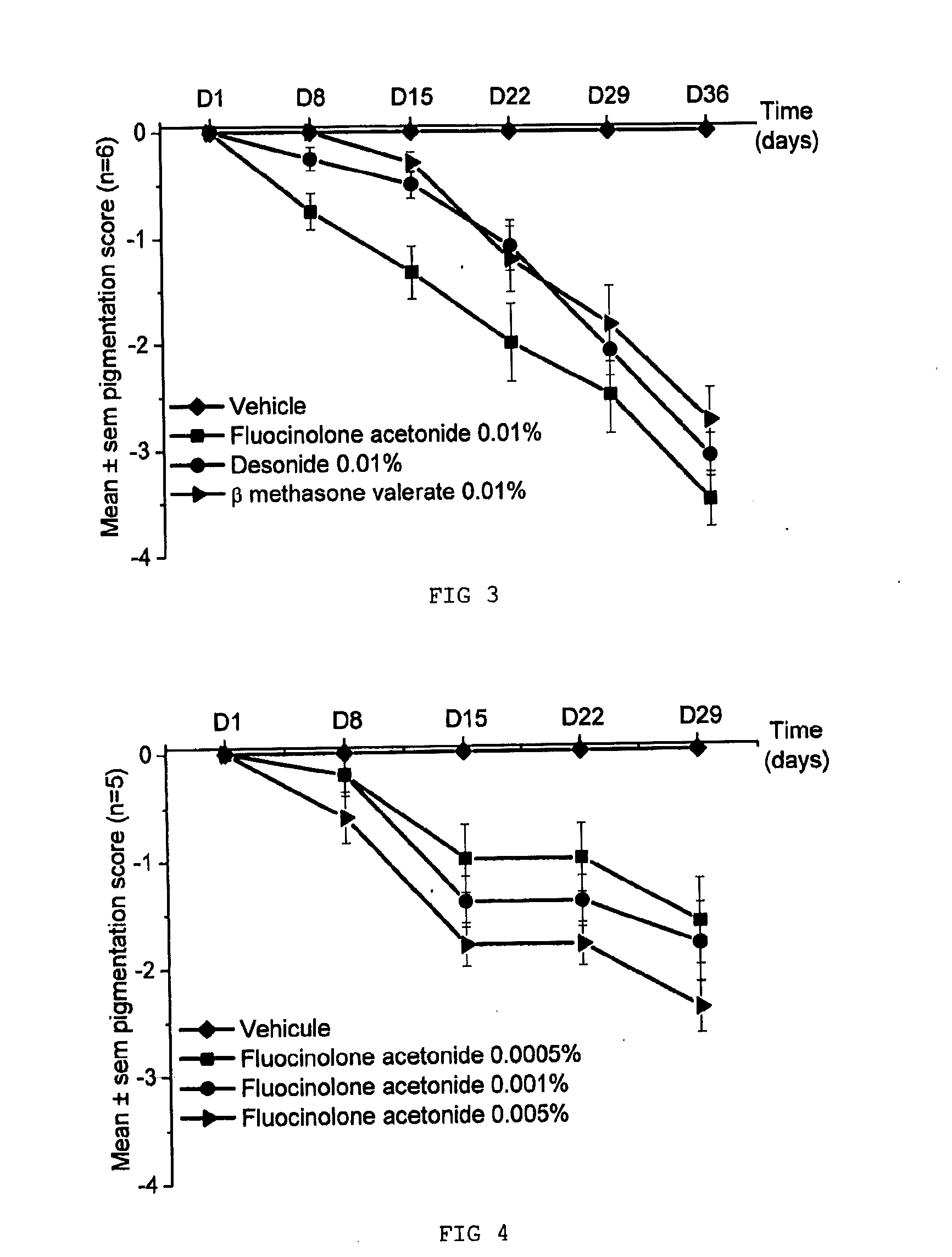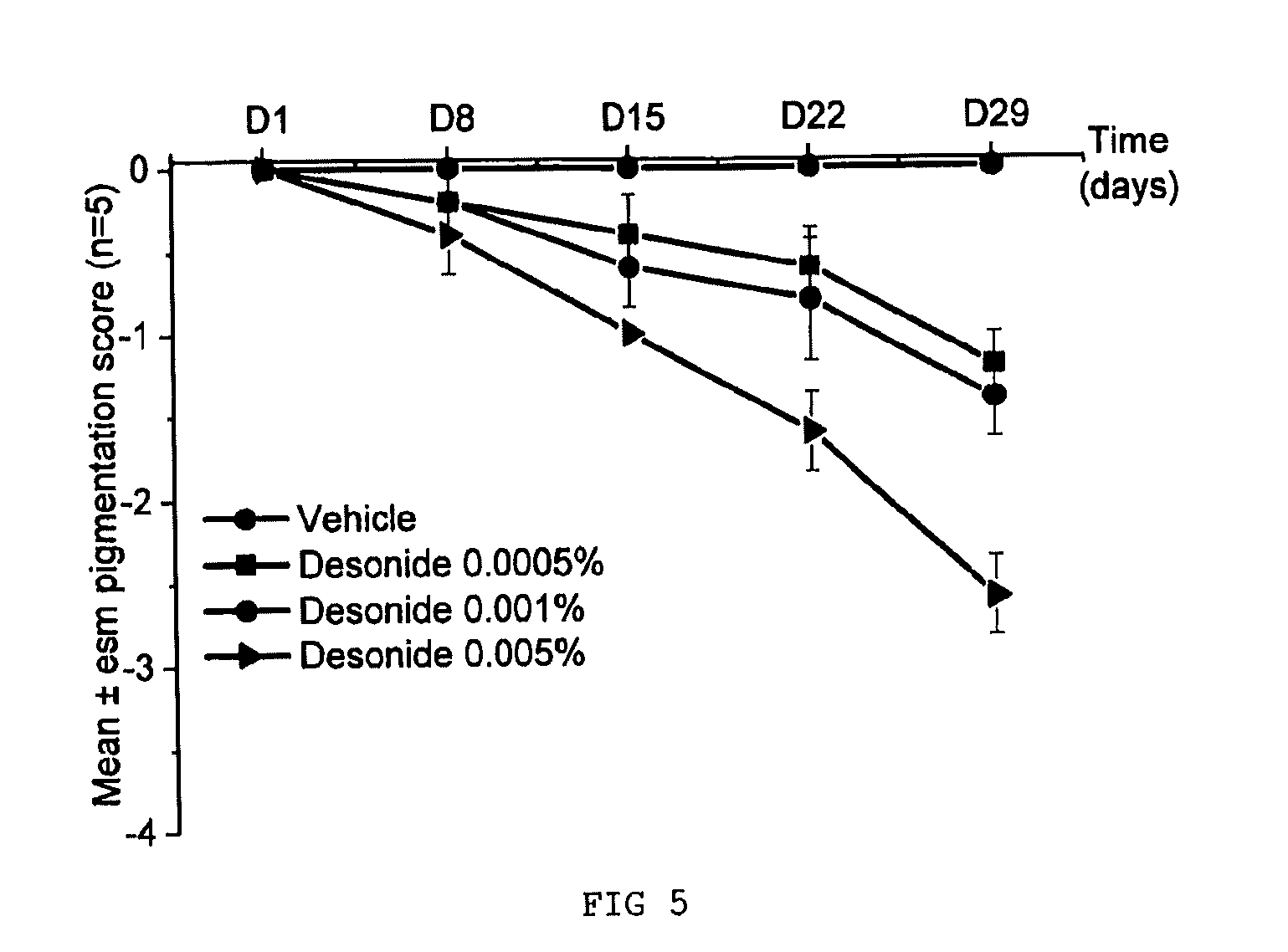Topical application of fluocinolone acetonide for depigmentation of the skin
- Summary
- Abstract
- Description
- Claims
- Application Information
AI Technical Summary
Benefits of technology
Problems solved by technology
Method used
Image
Examples
example 1
Comparative Evaluation of the Depigmenting Activity of Fluocinolone Acetonide and of Hydrocortisone Applied Topically for 4 Weeks to the Tail of SKH:HR2 Mice
[0046]The proportions of the various constituents are expressed as a percentage and by weight relative to the total weight of the composition.
[0047]Materials and Methods:
[0048]The depigmenting activity of fluocinolone acetonide and of hydrocortisone was evaluated on the tail of female SKH:HR2 mice that were 6 weeks old at the beginning of the study. The products were applied topically (20 μl of product to the tail), 5 days a week for 4 weeks. Each group contains 5 animals:
[0049]Group 1: carrier control (acetone)
[0050]Group 2: fluocinolone acetonide at 0.0005%
[0051]Group 3: fluocinolone acetonide at 0.01%
[0052]Group 4: hydrocortisone at 0.01%
[0053]Group 5: hydrocortisone at 0.05%
[0054]Group 6: hydrocortisone at 0.1%
[0055]Group 7: hydrocortisone at 0.5%.
[0056]Evaluation Methods:
[0057]Clinical observations: once a week the pigmenta...
example 2
Comparative Evaluation of the Depigmenting Activity of Various Corticosteroids Applied Topically for 5 Weeks to the Tail of SKH:HR2 Mice:
[0068]Materials and Methods:
[0069]The depigmenting activities of three corticosteroids, fluocinolone acetonide, desonide and β-methasone valerate, were evaluated on the tail of female SKH:HR2 mice that were 8 weeks old at the beginning of the study. The products were applied topically (20 μl of product to the tail), 5 days a week for 5 weeks. Each group contains 6 animals.
[0070]Group 1: carrier control (acetone)
[0071]Group 2: fluocinolone acetonide at 0.01%
[0072]Group 3: desonide at 0.01%
[0073]Group 4: p-methasone valerate at 0.01%.
[0074]Evaluation Methods:
[0075]Clinical observations: once a week, the pigmentation is scored on a scale ranging from 0 (base pigmentation) to −4 (total depigmentation).
[0076]Results:
[0077]Clinical Scores on the Tail of SKH:HR2 Mice:
[0078]The results obtained are reported in FIG. 3: pigmentation scores on the tail of SKH...
example 3
Comparative Evaluation of the Depigmenting Activity of Fluocinolone Acetonide and of Desonide Applied Topically for 4 Weeks to the Tail of SKH:HR2 Mice
[0080]Materials and Methods:
[0081]The depigmenting activity of fluocinolone acetonide and of desonide was evaluated on the tail of female SKH:HR2 mice that were 8 weeks old at the beginning of the study. The products were applied topically (20 μl of product to the tail), 5 days a week for 4 weeks. Each group contains 5 animals:
[0082]Group 1: carrier control (acetone)
[0083]Group 2: fluocinolone acetonide at 0.0005%
[0084]Group 3: fluocinolone acetonide at 0.001%
[0085]Group 4: fluocinolone acetonide at 0.005%
[0086]Group 5: desonide at 0.0005%
[0087]Group 6: desonide at 0.001%
[0088]Group 7: desonide at 0.005%.
[0089]Evaluation Methods:
[0090]Clinical observations: once a week, the pigmentation is scored on a scale ranging from 0 (base pigmentation) to −4 (total depigmentation).
[0091]Results:
[0092]Clinical Scores on the Tail of SKH:HR2 Mice:
[...
PUM
 Login to View More
Login to View More Abstract
Description
Claims
Application Information
 Login to View More
Login to View More - R&D
- Intellectual Property
- Life Sciences
- Materials
- Tech Scout
- Unparalleled Data Quality
- Higher Quality Content
- 60% Fewer Hallucinations
Browse by: Latest US Patents, China's latest patents, Technical Efficacy Thesaurus, Application Domain, Technology Topic, Popular Technical Reports.
© 2025 PatSnap. All rights reserved.Legal|Privacy policy|Modern Slavery Act Transparency Statement|Sitemap|About US| Contact US: help@patsnap.com



